Your speedy, superfood countertop garden
Sprouts are nutrient dense food that are ready-to-eat in just 5 days. Feel your best for less than $1 per serving.


Thoughtfully designed sprouters and organic seeds that grow superfood in 5 days!
-
Starter Kit: Organic Salad Mix 8oz
Precio habitual $79.99Precio habitualPrecio unitario / por -
Starter Kit: Organic Broccoli 8oz
Precio habitual $86.99Precio habitualPrecio unitario / por -
Starter kit: Broccoli High-Glucoraphanin (Non-GMO) 8oz
Precio habitual $99.99Precio habitualPrecio unitario / por -
germinador
Precio habitual $69.99Precio habitualPrecio unitario / por -
Mezcla de ensalada orgánica
Precio habitual A partir de $12.99Precio habitualPrecio unitario / por -
Brócoli Orgánico
Precio habitual A partir de $25.99Precio habitualPrecio unitario / por -
High-Glucoraphanin Broccoli (Non-GMO)
Precio habitual A partir de $35.99Precio habitualPrecio unitario / por -
El libro del brote
Precio habitual $18.99Precio habitualPrecio unitario / por -
Alfalfa Orgánica
Precio habitual A partir de $13.88Precio habitualPrecio unitario / por -
Lentejas Orgánicas
Precio habitual A partir de $12.99Precio habitualPrecio unitario / por
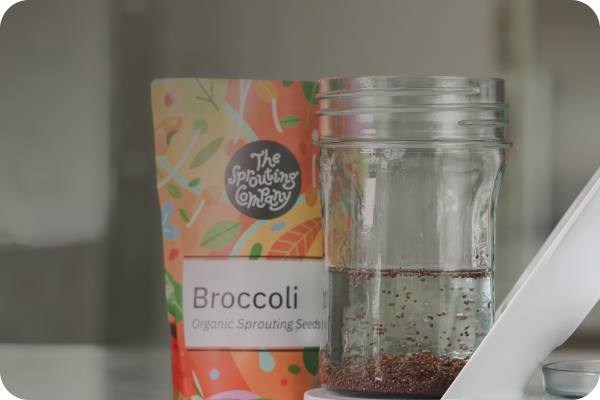
Add seeds to a jar, cover with water, and soak for 8-10 hours.
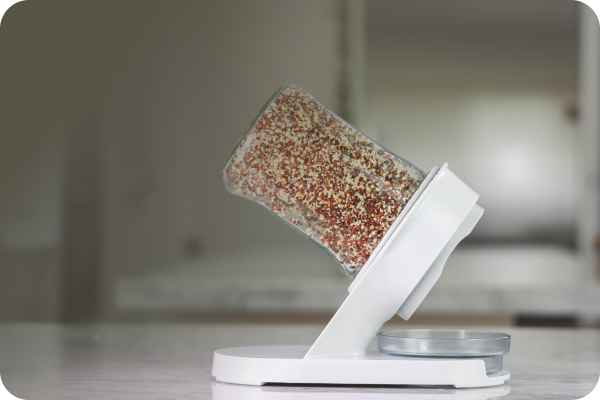
Rinse and drain the seeds twice daily. Watch sprouts emerge in 2–5 days.
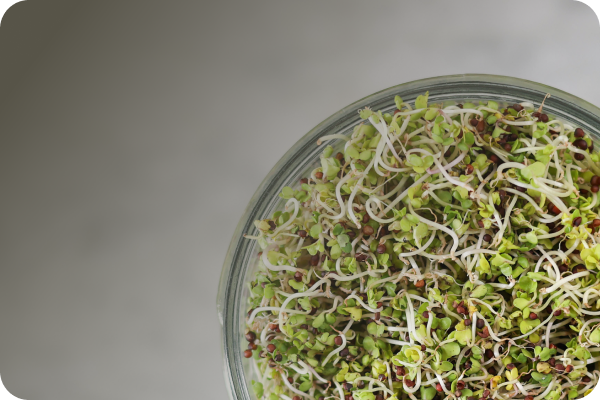
Once sprouts reach 1–3 inches, rinse, dry, and enjoy fresh in meals.
Grow a garden of the most nutrient-dense vegetables right on your countertop in a little as 3 days with our minimalist designed sprouting kits and premium organic seeds.
Harvest fresh, lush sprouts in days, not weeks, for a fraction of the grocery store price.
Elevate your cooking with vibrant, fresh flavors of homegrown sprouts, transforming every meal into delicious and nutritious masterpieces.
We built the sprouter we needed
The first high capacity sprouter, built specifically for sprouting. Grow 7 servings of sprouts in 5 days!

Straight walled for 100% drainage
Our sprouter has a patent pending zero barrier water path.
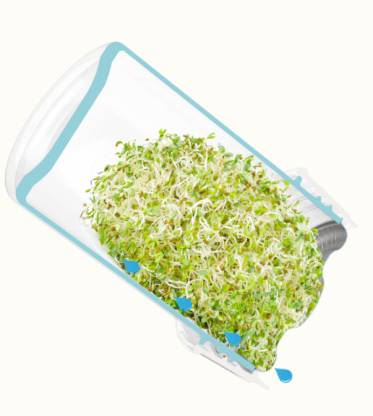

Optimal airflow
The stand holds the sprouter at the perfect angle for airflow and drainage. No more bowls as stands, or flimsy stands.
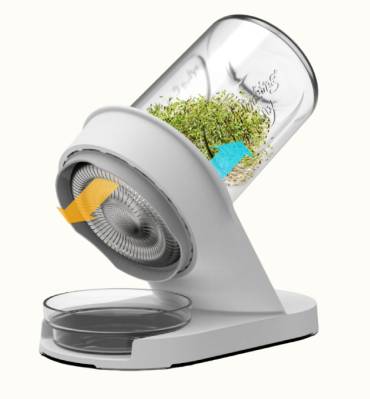
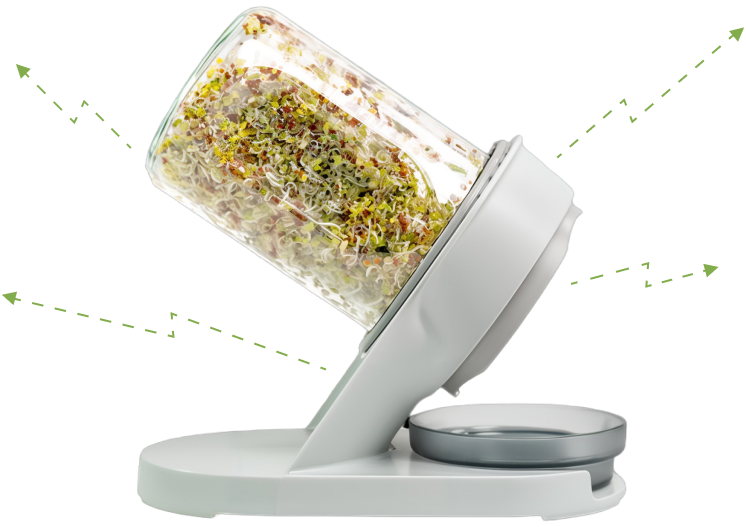

An all-in-one system containing
A thick glass sprouter, stainless steel filter, recycled stand, and removable drip tray- no need to cobble together a bunch of repurposed parts

Dishwasher safe
High quality materials, all dishwasher safe
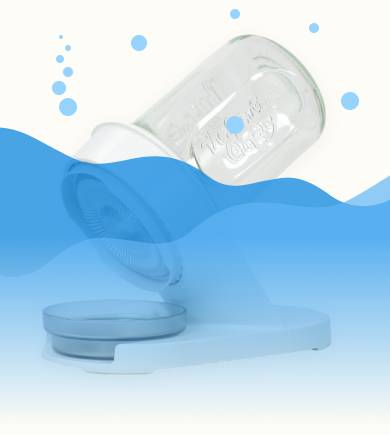
Seed Subscriptions
Never run out of seeds so you always have sprouts ready to go.
The Best Seeds Guaranteed
-

Fast shipping
-

Money back guarantee
-

Support/Guidance 24/7
-

Pathogen tested, organic, glyphosate free


Eating mostly plants is one of the best things an individual can do for the planet. Sprouting takes this to the next level via countertop agriculture, reducing carbon footprint previously occupied by shipping heavy and perishable, water laden products around the world. Everybody should have access to fresh, organic vegetables at an affordable price. Sprouting inherently makes this possible. The Sprouting Company is evaluating initiatives to help us take sprouts to more people who may need even more accessibility.
How do I grow and harvest sprouts?
What should I do if my jar breaks?
Email us at: support@thesproutingcompany.com
How do I cancel my subscription?
Easy, please search your email for the account creation link that you were sent when you placed your subscription order. You can pause, skip, or modify your subscription there in seconds.
How many servings come in a bag of seeds?
It depends on which seed. For leafy greens it's 5.5 crops/bag. Each crop generates about 6-7 servings. So about 35 servings.
I'd like to do a return.
We get it, sometimes you buy something that isn't a good fit. Just mail it back to: 321 Walnut St. #339 Newtonville, MA 02460. We do not offer free return shipping, and cannot accept returns on any seeds sealed or unsealed, as they are a delicate food item.
How do I know when my sprouts are ready?
- Short answer, it depends. Some seeds (like lentils and green peas) are commonly consumed after 3 days of growing, whereas leafy greens are most often grown to 5 or 6 days.
- Visually, we’re looking for white sprout tails anywhere from .25” to 3” long, depending on the seed type.
- Taste can change based on growth duration and other factors. You can always taste your sprouts as they grow to determine when you personally think they’re ready (just be sure to wash your hands before reaching into the jar, and rinse the sprouts before tasting them).
Are sprouts safe?
Yes, if you growth them properly. Sprouts are as safe as any other food item.
Why should I eat sprouts?
- Sprouts are vegetables. Diets rich in vegetables are ideal (sources).
- Sprouts are incredibly nutrient dense. As a broccoli seed, for example, grows and matures. Not all the nutrients increase at the same rate as the plant grows. If you take 1 cup of broccoli sprouts and compare it to 1 cup of mature broccoli, the sprouts have 300% more Vitamin C.
- Sprouts are living foods, the freshest possible food.
- Sprouts are delicious. Check our recipe section for inspiration, or just add sprouts to whatever you’re cooking.
Are my broccoli sprouts moldy?
- If you’re using our sprouter and rinsing twice a day, probably not.
- Let’s talk about “Root Hairs”, the tiny white hairs seen on the stalks of some sprouts, often mistaken for mold. These are Cilia, and are what a thirsty sprout uses to absorb more water. While harmless, you should rinse your sprouts when you see them, as they CAN get out of control and turn to a mold situation. If the hairs are still there after rinsing, it is likely mold, discard the batch, sanitize your equipment and seeds, and start over.
What equipment do I need to sprout?
- Seeds are incredible, they’ll sprout in just about anything. We suggest glass jars with high quality stainless steel strainers for all sprouts except “mucilagenous” ones like chia and flax. Trays are another popular option, but jars tend to be easier, especially at harvest.
- We do not suggest using clay, terracotta, or earthenware sprouters. Their porous nature, does help balance moisture, but unfortunately also acts as a haven for bacteria during the course of one grow.
How do I harvest sprouts?
- There are three goals with harvesting.
- Rinse off biofilm from sprouts (helps them last longer, and increases food safety)
- Remove seed hulls (optional). This does increase shelf life by a couple days.
- Dry the sprouts. It is important that sprouts not be wet when stored.
- We’ve found that a salad spinner is the best way to do this. It is also an ideal storage container, just keep the lid loose in the fridge.
My sprouts are growing too slowly
- They’re probably cold. Sprouts will take twice as long to grow at 65-68 degrees as they will at 72 degrees.
- Your soak duration might have been off. Make sure at least 2/3 of your seeds have sprouted tails. If not, you may have over/under soaked.
- If you see white stuff, determine if it is mold (see above). Discard if so.
- If you see very very cloudy water during a rinse, discard the batch.
- If the batch smells rotten, discard the batch.
My broccoli sprouts smell, is that normal?
- Yes, a little, more if it is over 73 degrees. It’s the sulphuric nature of the plant.
- But it shouldn’t smell rotten.
My sprouts didn’t germinate?
- Check the soaking duration guidance on the seed packaging.
- Check the expiration date.
- Ensure you buying sprouting specific seeds, not bulk bin seeds
- Buy from reputable seed vendors (like us).
- Make sure it isn’t too cold or hot in your growing area. 70-72 is ideal.
Is it ok to buy seeds from my local market?
Only if they are labeled as sprouting-specific seeds. Sprouting seed is handled differently throughout the supply chain, non-sprouting seeds are potentially not safe to consume raw, and they may have low germination rate. Sprouting seeds from reputable vendors are triple pathogen tested and tested for high germination.
What is special about sprouting specific seeds?
Sprouting seed is handled differently throughout the supply chain, non-sprouting seeds are potentially not safe to consume raw, and they may have low germination rate. Sprouting seeds from reputable vendors are triple pathogen tested and tested for high germination.
What vegetables can I sprout?
- Can or should? Most seeds will sprout (even an Avocado pit!), but some either aren’t worth the effort or aren’t very tasty. Here’s a list to get you started:
- Leafy greens: broccoli, alfalfa, clover, kale, radish,
- Others: some varieties of corn, onion, garlic.
- Legumes: Lentils, green peas, soy beans, chickpea/garbanzo, adzuki, mung
How much dry seed should I use, how long do I soak it, and how long do I grow it for?
It depends on the seed, the vessel, the method, and the environmental conditions. Here is a cheat sheet:
How long do sprouts last?
- If you harvest and store them as we advise, we suggest consuming them within 5 days.
Is sanitizing required?
Sanitization is a personal preference that is optional. If you are pregnant/nursing, immunocompromised, or just concerned, it is a good option.

My family and I love our sprouter. It’s so easy to grow quick sprouts and very enjoyable to see the process all happen within a few days.
EL

If you want to feel like a gardening wizard with minimal effort, this device is your new best friend! I love growing healthy food right in my kitchen!
Jeremy B.

Really happy to have finally started my sprouting journey - this kit makes it super easy to eat organic veggies!
Susan R.

I don't usually write reviews but I can't emphasize how happy to have started my journey I am. Proud to share that I've been sprouting...
Susan R.

















